Fotis Kopsaftopoulos
Data-Driven Structural State Estimation via Multi-Fidelity Gaussian Process Models
May 03, 2025Abstract:Guided wave-based techniques have been used extensively in Structural Health Monitoring (SHM). Models using guided waves can provide information from both time and frequency domains to make themselves accurate and robust. Probabilistic SHM models, which have the ability to account for uncertainties, are developed when decision confidence intervals are of interest. Most active-sensing guided-wave methods rely on the assumption that a large dataset can be collected, making them impractical when data collection is constrained by time or environmental factors. Meanwhile, although simulation results may lack the accuracy of real-world data, they are easier to obtain. In this context, models that integrate data from multiple sources have the potential to combine the accuracy of experimental data with the convenience of simulated data, without requiring large and potentially costly experimental datasets. The goal of this work is to introduce and assess a probabilistic multi-fidelity Gaussian process regression framework for damage state estimation via the use of both experimental and simulated guided waves. The main differences from previous works include the integration of damage-sensitive features (damage indices, DIs) extracted from both experimental and numerical sources, as well as the use of a relatively small amount of real-world data. The proposed model was validated by two test cases where multiple data sources exist. For each test case, experimental data were collected from a piezoelectric sensor network attached to an aluminum plate with various structural conditions, while simulated data were generated using either multiphysics finite element model (FEM) or physics-based signal reconstruction approaches under the same conditions.
Guided Wave-Based Structural Awareness Under Varying Operating States via Manifold Representations
Apr 15, 2025Abstract:Guided wave-based structural health monitoring (SHM) remains a powerful strategy for identifying early-stage defects and safeguarding vital aerospace structures. Yet, its practical use is often hindered by the enormous, high-dimensional data streams produced by sensor arrays operating at megahertz sampling rates, coupled with the added complexity of shifts in environmental and operational conditions (EOCs). Studies have explored various data-compression approaches that retain critical diagnostic details in a lower-dimensional latent space. While conventional techniques can streamline dimensionality to some extent, they do not always capture the nonlinear interactions typical of guided waves. Manifold learning, as illustrated by Diffusion Maps, tackles these nonlinearities by deriving low-dimensional embeddings directly from wave signals, minimizing the need for manual feature extraction. In parallel, developments in deep learning -- particularly autoencoders -- provide an encoder-decoder model for both data compression and reconstruction. Convolutional autoencoders (CAEs) and variational autoencoders (VAEs) have been particularly effective for guided wave applications. However, current methods can still struggle to maintain accurate state estimation under changing EOCs, and they are often limited to a single task. In response, the proposed framework adopts a two-fold strategy: it compresses high-dimensional signals into lower-dimensional representations and then leverages those representations to both estimate structural states and reconstruct the original data, even as conditions vary. Applied to two real-world SHM use-cases, this integrated method has proven its ability to preserve and retrieve key damage signatures under noise, shifting operational parameters, and other complicating factors.
Data-driven Framework for Forward and Inverse Problem in Guided Waves Based Structural Healthy Monitoring Under Varying Environmental and Operating Conditions
Oct 01, 2024



Abstract:Recently, guided wave-based techniques have garnered increased attention from researchers in the field of Structural Health Monitoring (SHM) for damage detection and quantification. Extracting features that are sensitive to changes in structural conditions has become a critical step. Guided waves, being one of the most widely used techniques, are highly responsive to structural changes caused by various types of damage. However, due to disturbances from environmental and operational conditions (EOCs) and waveforms reflected from boundaries and damage in complex systems, manually extracting features related to the system state is challenging. To address this, various neural networks, capable of automatically deriving features, have been developed and applied to system identification tasks. Among these, Convolutional Autoencoders (CAEs) have proven effective as damage detectors, projecting data efficiently into a latent space. However, existing CAE-based models for damage diagnosis often overlook the influence of EOCs, which can significantly impact model performance. In this work, a scheme that provides accurate damage level classification while estimating EOCs, such as loading conditions, making the model adaptable to varying external factors is introduced. By restructuring and combining the CAE with feedforward neural networks (FFNNs), the proposed scheme also enables signal reconstruction, a potentially valuable feature when data is limited. The method has been validated on an aluminum plate with various damage levels under different loading conditions, achieving near-perfect state classification and low-error signal reconstruction. The framework has also been tested on incomplete datasets to verify its robustness.
Stochastic Identification-based Active Sensing Acousto-Ultrasound SHM Using Stationary Time Series Models
Jan 26, 2022Abstract:In this work, a probabilistic damage detection and identification scheme using stochastic time series models in the context of acousto-ultrasound guided wave-based SHM is proposed, and its performance is assessed experimentally. In order to simplify the damage detection and identification process, model parameters are modified based on the singular value decomposition (SVD) as well as the principal component analysis (PCA)-based truncation approach. The modified model parameters are then used to estimate a statistical characteristic quantity that follows a chi-squared distribution. A probabilistic threshold is used instead of a user-defined margin to facilitate automatic damage detection. The method's effectiveness is assessed via multiple experiments using both metallic and composite coupons and under various damage scenarios using damage intersecting and damage non-intersecting paths. The results of the study confirm the high potential and effectiveness of the stochastic time series methods for guided wave-based damage detection and identification in a potentially automated way.
Time-varying Identification of Guided Wave Propagation under Varying Temperature via Non-Stationary Time Series Models
Jan 12, 2022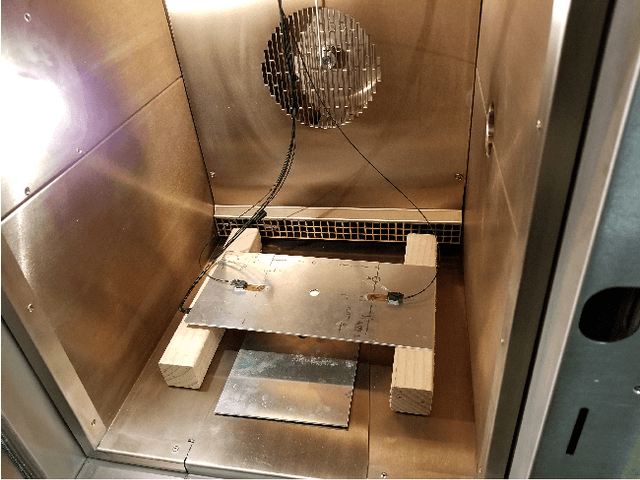
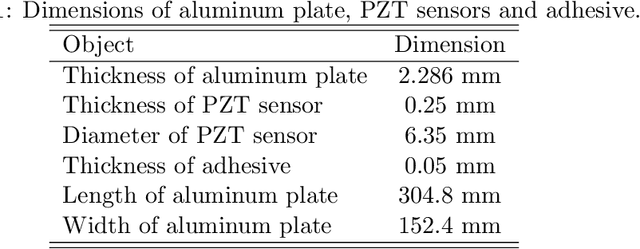
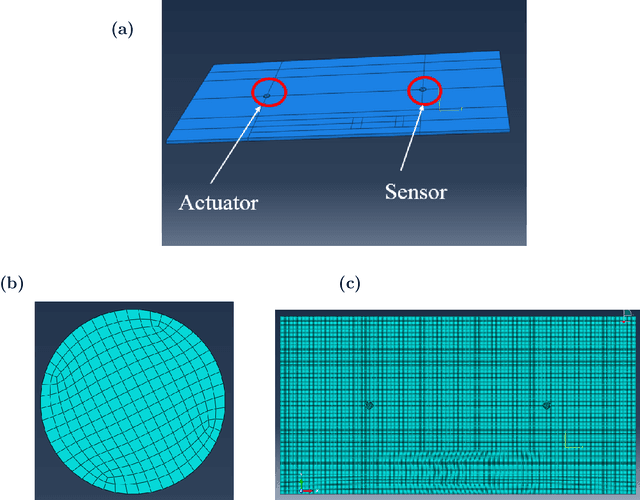
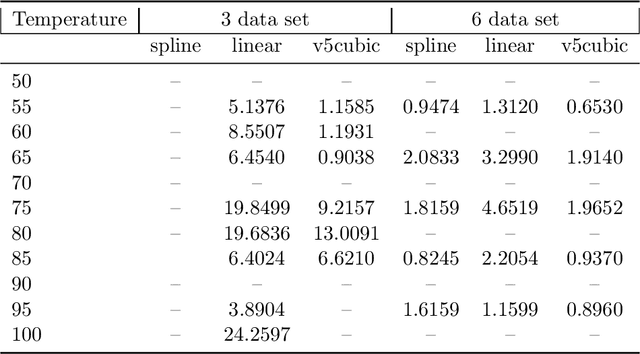
Abstract:Modern-day civil, mechanical, and aeronautical structures are transitioning towards a continuous, online, and automated maintenance paradigm in order to ensure increased safety and reliability. The field of structural health monitoring (SHM) is playing a key role in this respect and active sensing acousto-ultrasound guided-wave based SHM techniques have shown great promise due to their potential sensitivity to small changes in the structure. However, the methods' robustness and diagnosis capability become limited in the presence of environmental and operational variability such as changing temperature. In order to circumvent this difficulty, in this paper, a novel stochastic time series-based framework was adopted to model guided wave propagation under varying temperatures. Different stochastic time-varying time series models, such as Recursive Maximum Likelihood Time-varying Auto-Regressive (RML-TAR) and Recursive Maximum Likelihood Time-varying Auto-Regressive with Exogenous Excitation (RML-TARX) models are put forward to model and capture the underlying dynamics of guided wave propagation under varying temperatures. The steps and facets of the identification procedure are presented and clearly explained. Then the identified models are used to perform one-step-ahead prediction as well as "simulation" of the guided wave signals. In order to gain insight from a physics perspective, high-fidelity finite element (FE) models were also established to model the effect of temperature variation on guided wave propagation. Finally, surrogate models are formulated through the use of stochastic time-dependent RML-TARX models and compared with the FE models under varying temperatures.
Gaussian Process Regression for Active Sensing Probabilistic Structural Health Monitoring: Experimental Assessment Across Multiple Damage and Loading Scenarios
Jun 28, 2021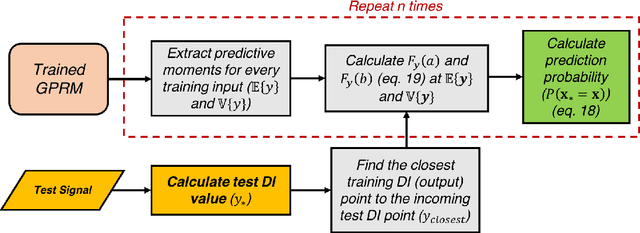
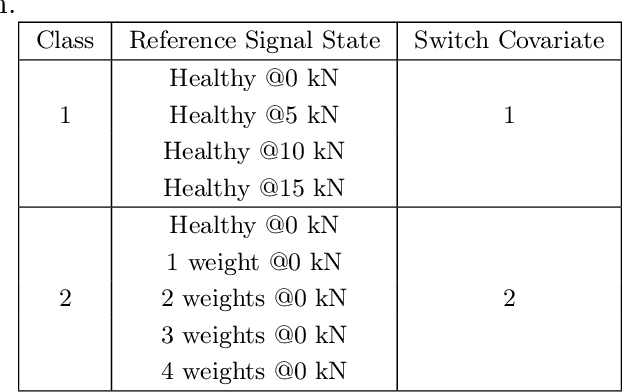


Abstract:In the near future, Structural Health Monitoring (SHM) technologies will be capable of overcoming the drawbacks in the current maintenance and life-cycle management paradigms, namely: cost, increased downtime, less-than-optimal safety management paradigm and the limited applicability of fully-autonomous operations. In the context of SHM, one of the most challenging tasks is damage quantification. Current methods face accuracy and/or robustness issues when it comes to varying operating and environmental conditions. In addition, the damage/no-damage paradigm of current frameworks does not offer much information to maintainers on the ground for proper decision-making. In this study, a novel structural damage quantification framework is proposed based on widely-used Damage Indices (DIs) and Gaussian Process Regression Models (GPRMs). The novelty lies in calculating the probability of an incoming test DI point originating from a specific state, which allows for probability-educated decision-making. This framework is applied to three test cases: a Carbon Fiber-Reinforced Plastic (CFRP) coupon with attached weights as simulated damage, an aluminum coupon with a notch, and an aluminum coupon with attached weights as simulated damage under varying loading states. The state prediction method presented herein is applied to single-state quantification in the first two test cases, as well as the third one assuming the loading state is known. Finally, the proposed method is applied to the third test case assuming neither the damage size nor the load is known in order to predict both simultaneously from incoming DI test points. In applying this framework, two forms of GPRMs (standard and variational heteroscedastic) are used in order to critically assess their performances with respect to the three test cases.
Statistical guided-waves-based SHM via stochastic non-parametric time series models
Jan 29, 2021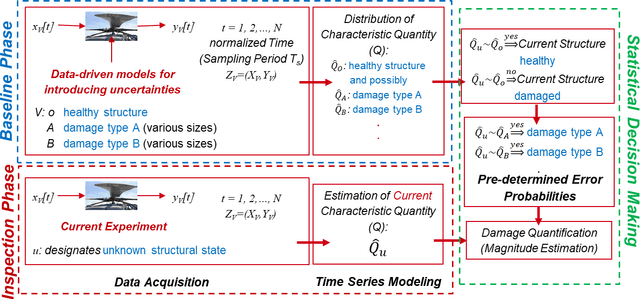


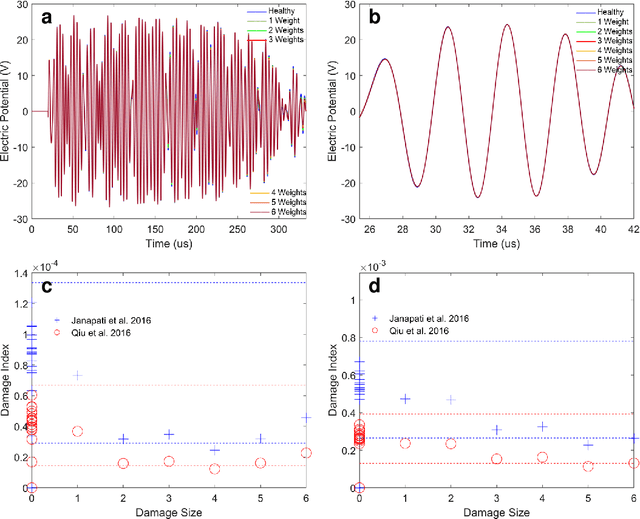
Abstract:Damage detection in active-sensing, guided-waves-based Structural Health Monitoring (SHM) has evolved through multiple eras of development during the past decades. Nevertheless, there still exists a number of challenges facing the current state-of-the-art approaches, both in the industry as well as in research and development, including low damage sensitivity, lack of robustness to uncertainties, need for user-defined thresholds, and non-uniform response across a sensor network. In this work, a novel statistical framework is proposed for active-sensing SHM based on the use of ultrasonic guided waves. This framework is based on stochastic non-parametric time series models and their corresponding statistical properties in order to readily provide healthy confidence bounds and enable accurate and robust damage detection via the use of appropriate statistical decision making tests. Three such methods and corresponding statistical quantities (test statistics) along with decision making schemes are formulated and experimentally assessed via the use of three coupons with different levels of complexity: an Al plate with a growing notch, a Carbon fiber-reinforced plastic (CFRP) plate with added weights to simulate local damages, and the CFRP panel used in the Open Guided Waves project [1], all fitted with piezoelectric transducers and a pitch-catch configuration. The performance of the proposed methods is compared to that of state-of-the-art time-domain damage indices (DIs). The results demonstrate the increased sensitivity and robustness of the proposed methods, with better tracking capability of damage evolution compared to conventional approaches, even for damage-non-intersecting actuator-sensor paths. Overall, the proposed statistical methods exhibit greater damage sensitivity across different components, with enhanced robustness to uncertainty, as well as user-friendly application.
 Add to Chrome
Add to Chrome Add to Firefox
Add to Firefox Add to Edge
Add to Edge